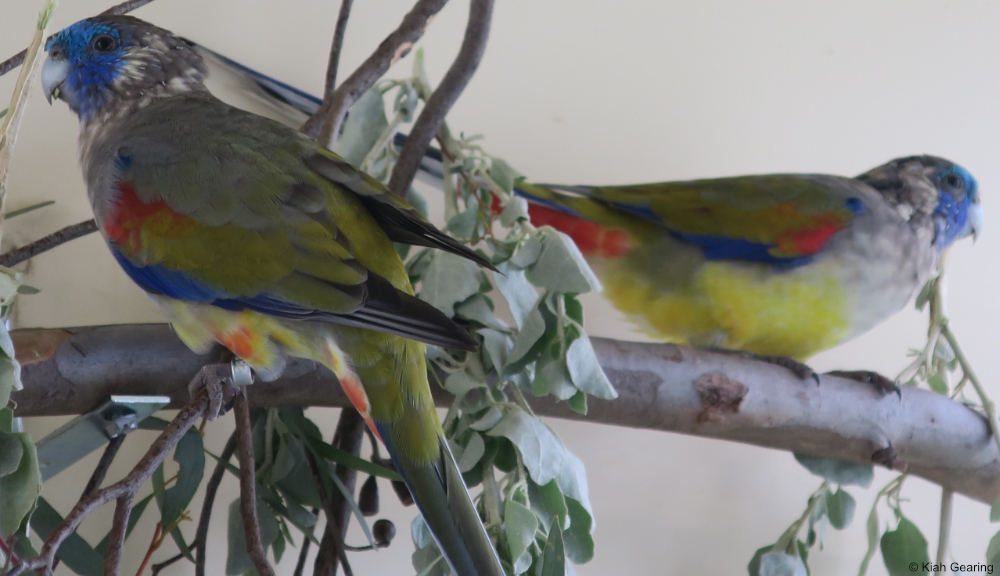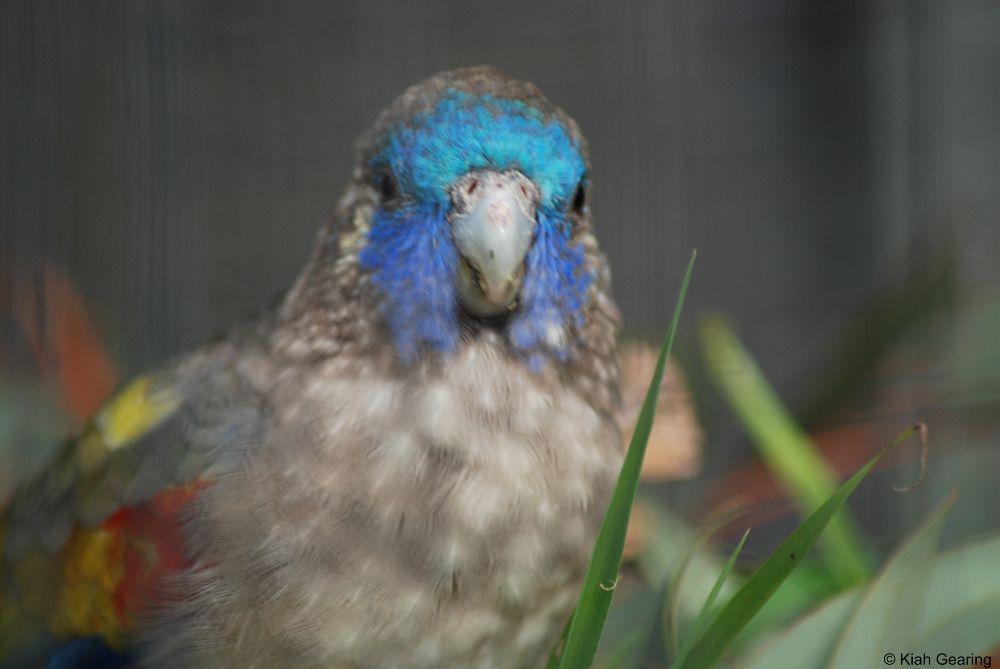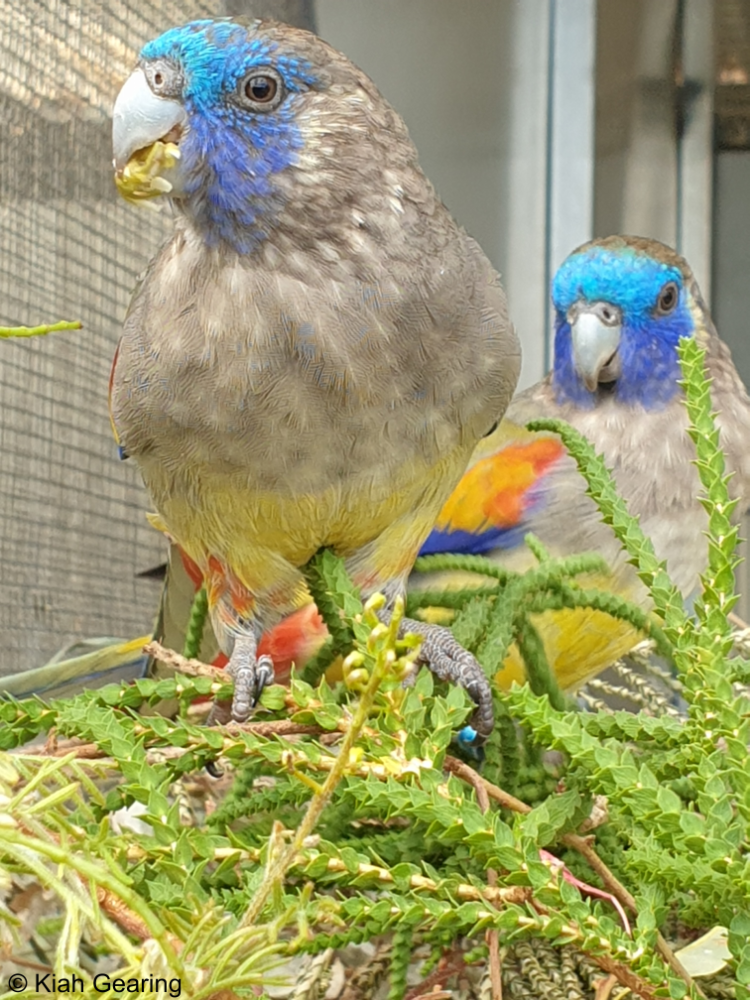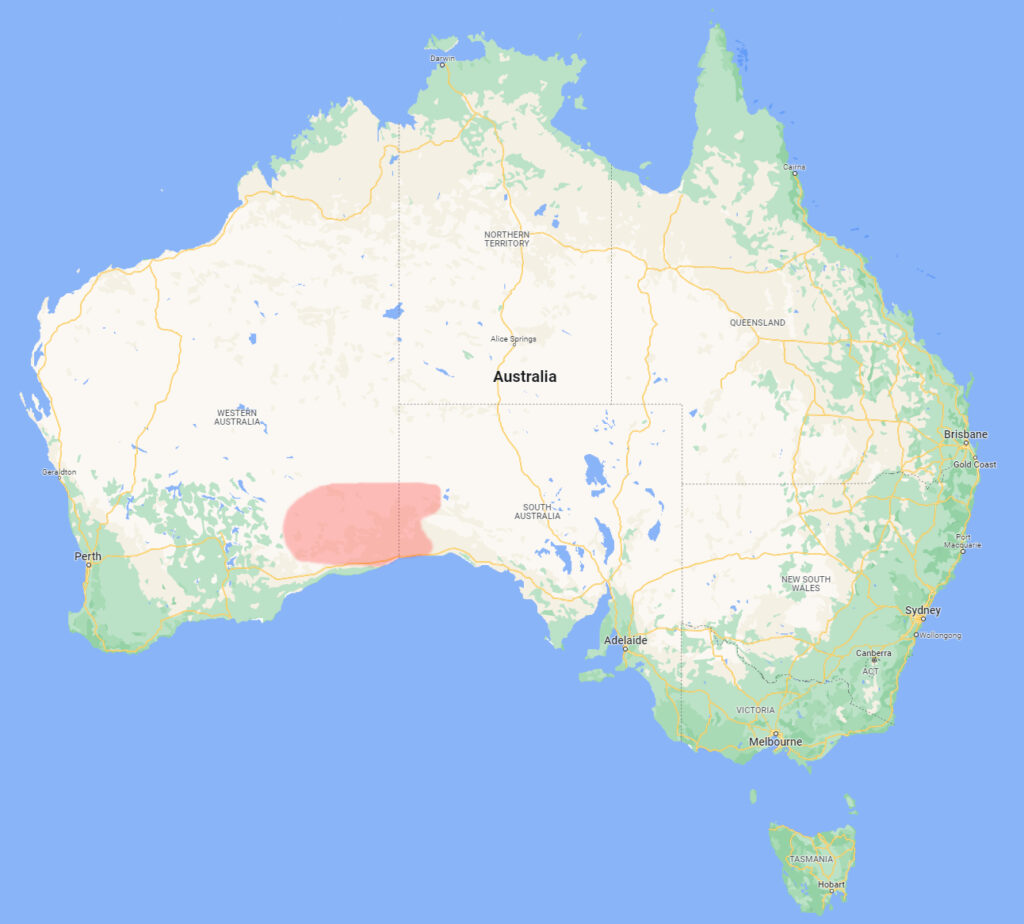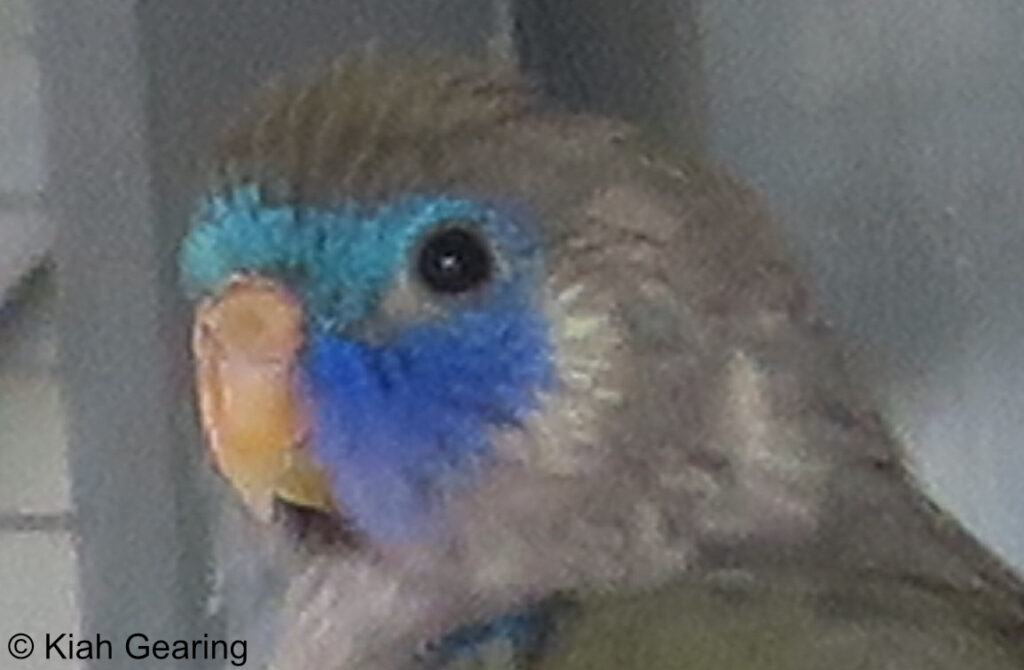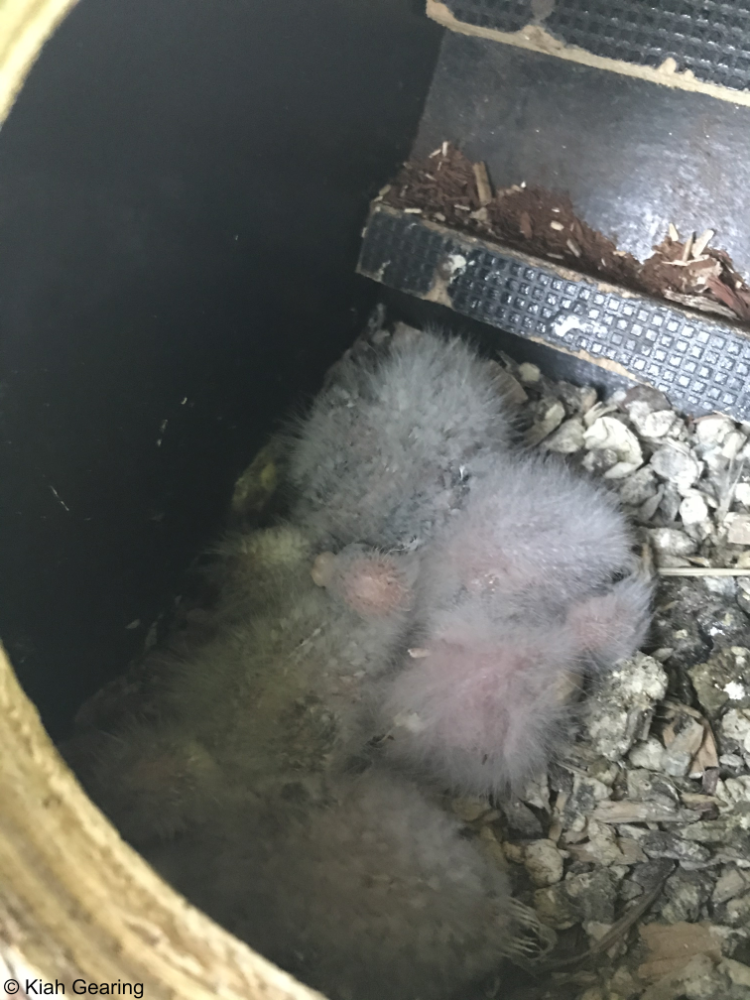Northiella narethae - Naretha Bluebonnet
Front left: female, back right: male. Photo: Kiah Gearing
Also: A big warm thank you to Lois for helping with photos and information for this page! 🙂
The Naretha Bluebonnet – Northiella narethae (White, HL, 1921) – is a small Australian parrot. It is smaller in size than the Eastern Bluebonnet. The wild population has declined due to trapping and loss of habitat; many nesting trees are either destroyed due to poachers chopping out the the nesting trees or non-native animals eating or ring-barking the trees. Bluebonnet is common in captivity.
The Naretha Bluebonnet was first recorded in 1921 in Central Australia. It was first included it in the Psephotus genus but in 1994 the Eastern Bluebonnet and Naretha Bluebonnet were moved to the new Northiella genus; the Naretha Bluebonnet was reclassified as Northiella haematogaster naretha as it was considered to be a subspecies of the Eastern Bluebonnet. However in 2015 it was concluded that the Naretha Bluebonnet is a separate species and it was reclassified once again to Northiella narethae.
A lifespan of more than years have been reported.
Description
Mostly grey/olive color with blue forecrown, lores and around eyes which turns into a darker blue/lilac on forecheeks and chin. Yellow abdomen and thighs. Undertail coverts are red; outer lesser wing coverts are orange/red. Light-grey bill.
The male and female are said to look similar but in fact there are differences: In general the males are slightly larger; males have overall a larger head, in that it is wider/broader; sometimes the male birds are bigger all over but this is not always the case. Colour wise the male bird has more vibrant blues and red on their bodies; especially the head and the blue is found in a bigger area on the male. The chest of a male naretha is sun yellow whereas in a hen it is lemon yellow. These are the easiest to see distinguishing visual features.
Juveniles look similar to the adult female but duller colors and the beak is yellow.
Length: The male is about 28 cm long; the female is slightly smaller at about about 26 cm.
Weight: 80-90 g.
Taxonomy
- Order: Psittaciformes
- Family: Cacatuidae
- Genus: Nymphicus
Synonyms
- Danish: Naretha-blåmaskeparakit
- English: Naretha Bluebonnet, Little Bluebonnet, Bluebonnet (Naretha)
- French: Perruche à bonnet bleu (de Naretha), Perruche de Nareth, Perruche de Naretha, Perruche petite
- German: Narethasittich
- Portuguese: Periquito-de-naretha
- Spanish: Perico Naretha
- Scientific: Northiella narethae, Northiella haematogaster naretha, Psephotus narethae
Habitat
Naretha Bluebonnet is native to the southeastern Western Australia and southwestern South Australia (see red area on map to the right).
It is found in dry or arid woodlands dominated by acacia species. They move seasonally with the rain.
Usually seen in pairs or small flocks up to 20 birds.
Subspecies
None.
Diet
Wild birds feed on feeds on seed grasses, nuts, fruits, berries, blossoms, insects and larvae. They are often seen eating the berries or seed pods of the well known chenopods of the homelands – the bluebush (Maireana species) and saltbush (atriplex species) – of which these 2 plant species provide integral nutrition to the naretha. The naretha, with the introduction of European agricultural industry to the homelands, has taken advantage of the many weed species introduced into their range and are often seen and photographed eating weeds such as the wild sage (a salvia type).
In captivity the diet should be based on a finch seed mix of millets, pannicum and canary seed – in the colder months supplement this seed mix with a small amount of hulled oats. Also provide fruits and greens.
Aviculture
Bluebonnet can be aggressive even towards larger birds so it is recommended to keep only one pair for each aviary and use double wiring between adjoining aviaries.
Bluebonnet enjoys bathing and also like scratching the soil or sand in the bottom of the aviary. Provide some bird safe branches for chewing. Breeding pairs develop a strong bond. It is recommended to place many young birds in a large aviary and let them decide their own partner, after which the pair can be isolated in their own aviary. Hens should be at least 12 months old before breeding.
A slanted type nest box is recommended with a size of ~18 x 18 x 60cmg. The hole should be roughly the size of a golf ball – it is important to use a small opening size to stop the male bird from gaining entry to the nest.
Breeding season is mid July – December. Wild birds nests in a tree cavity in she-oak (Casuarinaceae) trees
The clutch usually contains 5-6 eggs that are incubated for 19-24 days; the chicks reach fledging age after 4-5 weeks. Move the young birds to a separate aviary to avoid aggression from one or both parents.
Photo Credits
All photos on this page are Copyright © by Kiah Gearing
